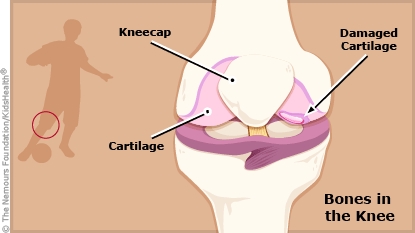Your child has osteochondritis dissecans (oss-tee-oh-kon-DRITE-iss DISS-ih-kanz) of their knee. Osteochondritis dissecans is a small area of damaged bone and cartilage (tissue that protects and supports bones) that can become loose or break away from the rest of the bone. Kids who have it usually have pain in the area, especially when they are active. If it's not treated, it can lead to continued pain, swelling, catching or locking of the joint, walking with a limp, and sometimes arthritis (a condition that causes joint pain, swelling, and stiffness).
By following your health care provider's directions about completely resting the knee and going to physical therapy, your child should heal well and be able to return to most of their usual activities within a few months. Full return to sports can take a little longer.


Follow your health care provider's instructions for:
If your child has pain, these may help:

Your child:

Why does osteochondritis dissecans happen? Osteochondritis dissecans of the knee usually happens after an injury or when the knee has repeated stress or overuse from sports and other physical activities. Genetic (inherited) factors can also play a role in whether a child develops osteochondritis dissecans.
How is osteochondritis dissecans diagnosed? Usually, a plain X-ray will show if there is osteochondritis dissecans. Your child may need to get an MRI (magnetic resonance imaging) if the osteochondritis dissecans area is small or to help your health care provider decide how best to treat it.
When can my child go back to their normal activities? Most kids need to completely rest the knee for 4–6 weeks. After resting, they can slowly start activities, including physical therapy. Most kids can return to sports after 3–6 months.
Will my child need surgery? Some kids need surgery if the osteochondritis dissecans area is big or is not getting better with rest.